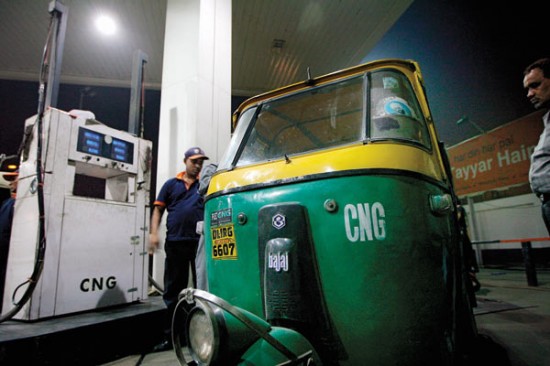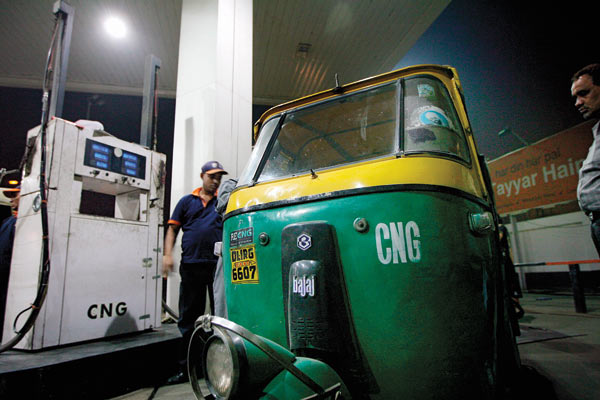Sustainable Energy
Cleaner Vehicles by the Million



Last January, for the first time, more cars were sold in China than in the United States. India’s vehicle fleet is growing at a rate of 7 to 10 percent per year. Instead of attempting to reduce greenhouse-gas emissions with expensive technologies such as electric vehicles, low-income countries in the Asia-Pacific region are focused on improving existing internal-combustion engines.
Converting cars to run on natural gas is an increasingly popular option. Of the 9.6 million natural-gas-fueled vehicles worldwide, 52 percent are in Asia-Pacific countries, with two million in Pakistan alone. A factory-built natural-gas vehicle can achieve reductions in carbon dioxide emissions as great as 25 percent, but most of the cars running on natural gas in this region are not quite as clean, because they have been converted from gasoline using after-market kits. Still, these converted vehicles emit half as much nitrous oxide as gasoline-fueled vehicles and three-quarters as much carbon monoxide. Conversion kits cost between $850 and $2,500, but conversion reduces driving costs because natural gas is cheaper than gasoline or diesel. The number of natural-gas vehicles has been growing at an annual rate of 40 percent over the last five years, according to the Asia Pacific Natural Gas Vehicles Association.
Asia is also home to more than 50 million vehicles powered by two-stroke engines, such as motorcycles and taxis. Per mile, each one produces as much in hydrocarbon and particulate emissions as 30 to 50 modern four-stroke automobiles, according to Bryan Willson, a professor of mechanical engineering at Colorado State University. The nonprofit Envirofit has developed a $300 fuel-injection kit that increases fuel efficiency by 35 percent and reduces hydrocarbon emissions by 89 percent. Owners can purchase the kit with microloans, and reduced fuel bills mean it pays for itself in six months.